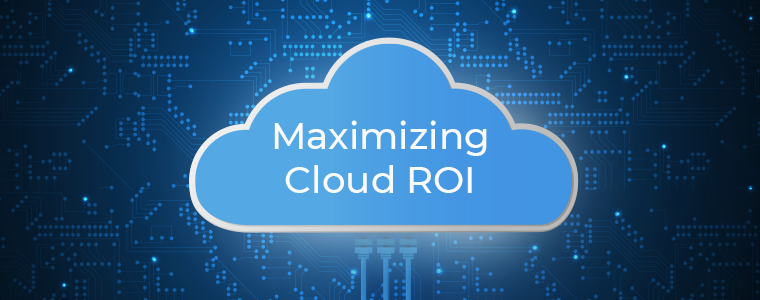3 Pitfalls of IT Support (and the AI Innovations That Eliminate Them)
We’ve all had bad technology experiences filled with roadblocks, setbacks, and outages. What’s more frustrating than sitting down to work on a significant project and not having access to the hardware, software, files, and systems you need?
The same bad experience of delays and interruptions can plague interactions with IT support. I want to highlight three of these pitfalls—not because they’re news to anyone, but because you may not know that artificial intelligence (AI) is making them obsolete.
If you’re tolerating a bad IT experience because you rely on in-house support or providers that have been slow to leverage AI, read on. Imagine what you and your organization could do if those interruptions were eliminated and you were left with a reliable and empowering technology experience.
Pitfall 1. Tickets take a long time to get resolved.
Even the process of submitting a ticket can be tedious. You pick a category for your issue from a long, confusing list and enter the same information multiple times. If you call in, you have to navigate through an endless phone tree, pressing buttons and hitting dead ends. You dread having to give basic information about yourself that the agent should already have in front of them.
Then you spend the day waiting for diagnostics, waiting for further instructions when suggested fixes don’t work, waiting for permissions, waiting for escalations. It’s aggravating to be kept in the dark about when the resolution will arrive, especially when you don’t understand why it has to take so long.
AI-enriched tickets are resolved faster, with less effort from users and agents.
Tickets that are supplemented with information from AI are quicker for users to submit and quicker for agents to resolve. AI and automation handle the predictable and repeatable processing in the middle so the user can have a productive and human interaction with an agent.
For example, using natural language processing (NLP), AI can assume the burden of data entry and routing. A user states their problem in their own words, and AI parses the information and identifies the relevant details. A well-trained AI model can detect the user’s intent, the category of the problem, and even the troublesome device, adding all that information to the ticket.
If the AI determines the cause of the issue needs more investigation, it runs diagnostics, collecting additional info the agent will need to fix the problem.
Then AI automatically sends the enriched ticket to the person who can best address it. Since that agent isn’t preoccupied with gathering missing info, they can pay more attention to the user and focus on giving them a positive experience.
Learn More

Pitfall 2. Learning doesn’t start until problems interrupt your work.
Traditionally, support gets involved when you run into an obstacle that brings your work to a halt. Troubleshooting happens during this downtime, and it often begins from scratch if IT has never encountered the issue before. That limited scope, where a lot of issues are new, is especially common for in-house IT, which only sees problems within their organization. But it also inhibits outside IT providers that don’t share information across clients.
Why doesn’t support step in before problems arise? Because they don’t have the information to predict them or the bandwidth to prevent them.
AI constantly learns across many organizations and prevents problems before they happen.
An AI model has the information and the bandwidth. It learns from a large and diverse group of users, capturing problems and solutions and sharing them across the network.
Then it uses this learning to predict issues and fix them before they interrupt work. You’ll see the benefits as the number of tickets goes steadily down, which usually means productivity and employee satisfaction are going up.
For example, when AI identifies a phishing campaign or new threat vector attacking one user or company, it can isolate the bad actor and take protective steps across all managed systems at once. For an IT provider with many clients, when one client is attacked, every other client can be preemptively protected.
AI models can also be trained to predict outages and equipment failures. Given a large data set, a predictive model can identify device behavior that tends to precede a malfunction, even when the behavior might appear benign on its own. Then action can be taken to head off the problem before it happens.

Pitfall 3. Security doesn’t keep up with changing risks.
Say that five years ago your organization decided two-factor authentication wasn’t necessary to protect access to a particular system. A username and password were deemed sufficient—no need for sending codes by text or requiring clicks to email links.
That decision met the needs of the time. But what about today? Conditions and technology change as the months and years pass. Bad actors have new incentives and develop new strategies for infiltrating your system. And the new vulnerability may not be discovered until after a breach or theft occurs.
Without a system in place to revisit security decisions before they become liabilities, protection remains piecemeal.
AI regularly reviews systems and makes predictions to prevent and mitigate incidents.
AI automation can have you covered both before and during a cybersecurity event.
Before an incident happens, intelligent system monitoring can continuously evaluate the surface area of your technology stack and send an alert when anything changes or a vulnerability appears. In many cases, the vulnerability can be eliminated in real time, well before any human could have noticed and acted.
Once a possible threat has been detected, the full potential of machine learning comes into play. With dozens of different systems, endpoints, and attack vectors providing sources of data, a human analyst couldn’t possibly evaluate the whole situation and determine the threat level and ideal response in seconds—but AI can.
With millions of security events flowing into a centralized machine-learning environment, AI can assess, triage, and dispatch threats to the right person to take action almost instantly, saving hours of analysis and potentially millions in breach-related damage.
Your first takeaway from these AI innovations should be that it’s a real possibility, today, to have a much better user experience—meaning smoother workdays, fewer interactions with IT, and greater safety from potential risks. Tech-enabled services that leverage AI are reducing the number of issues and fixing them faster compared to traditional support models.
The second takeaway, though, is that AI is not replacing human agents—it’s freeing them to provide fast, effective service, infused with even more of the personal touch that lifts one’s spirits.
To learn more about how Agio is combining AI with human brilliance to deliver the best technology experience, check out the paradigm shift we’re championing.
Share post
Featured Posts
Connect with us.
Need a solution? Want to partner with us? Please complete the fields below to connect with a member of our team.




